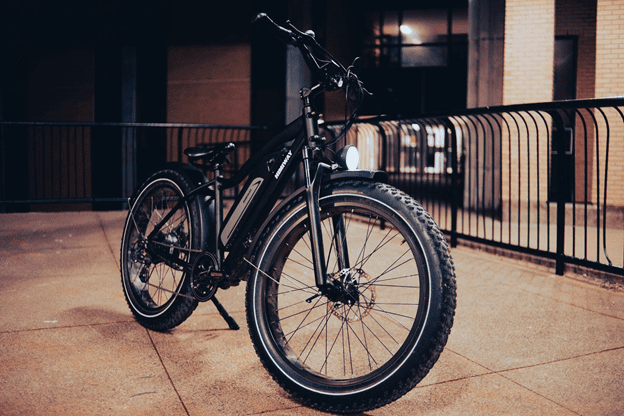Electric Bike Charging Tips for Long Battery Life

E-bikes have soared in popularity in the last few years; they are the fastest-growing type of bike in the US. They surpassed road bikes as the third largest category of overall bikes in 2021. There is a good reason why e-bikes have outsold electric cars. Every type of riding gets a powerful boost from the lightweight electric motor.
At the heart of the motor is a pretty powerful lithium-based battery. If you plan on getting a long-term battery life and the best range, you must take proper care of that battery. This article will tell you everything you need to know about charging the battery of your e-bike and optimizing its lifespan.
How To Enhance The Range And Lifespan of The Battery
In case you want to know the definition, the range is the runtime of your e-bike. It depicts how many miles your bike will run on a single charge of the battery. The range might vary, even on the same bike. For instance, if you are riding to the office with a light backpack on a flat surface, you will be able to ride farther than if you were riding uphill fully loaded from the supermarket. The range will also differ in e-mountain bikes as they are meant to operate in different circumstances. Considering these factors, a typical e-bike will provide you with 25-75 miles of range.
On the other hand, how many times a battery can be discharged and can be recharged before the capacity significantly starts to diminish is called its lifespan. You will notice that the range has started to shrink as the capacity diminishes. A typical benchmark for the e-bike’s battery life cycle is 500 complete discharge/recharge cycles. Hence, before you see a drop in capacity, you should be able to work out three to five years of regular use.
The range and lifespan of your e-bike battery are linked, even though they are different. This means the same actions will shorten the lifespan and reduce the range of your e-bike batteries. Running the motor hard is often the culprit. This way, you’re running the bike through the charging cycles quicker, shortening its life as the ride relies more on the motor power.
Pedal cadence is a lesser-known factor that strains the batteries and motor. 70=90 rpm is where most e-bike motors are optimized for efficiency. You can bring this efficiency down by pedaling faster. Choose your gears smartly to stay in the 70-90 rpm sweet spot without making the motor work harder.
Mistakes That Reduce The Efficiency of The Battery
The battery of new e-bikes probably has been inactive for some time, so it is advised that you charge it to full when you buy a new e-bike. However, the lithium batteries of e-bikes don’t need to be fully discharged and recharged each time, so their full capacity can be held. On the contrary, it is advised that you not run the battery to zero as it can damage the battery permanently, making it not recharge to its full original capacity in the future.
You need to store the battery in a dry space at room temperature if you do not ride the bike for a few weeks. Be sure to keep the battery between 30-60 percent of charge while storing, as this is the most stable level when storing for a longer period. This also lowers the risk of your battery getting damaged from a deep discharge. You should not leave your battery plugged into the charger for extended periods, as this might reduce the overall capacity. Keep the battery levels above 30 percent by charging it partly when you go long periods without riding the bike.
Lithium batteries are not affected much by cold weather; hence, while riding, you should not see a reduced range unless the temperatures are almost freezing. However, the capacity of the batteries will be reduced if you store the battery below freezing temperatures for longer periods as this can damage the battery’s cathode. These batteries also don’t charge properly in cold temperatures. Also, store the battery inside when you are not going to be riding your bike for a long time, and will store the bike outside in very cold temperatures.
You also need to protect your battery from extreme heat such as too much exposure to the sun or next to a hot car. The internal components of the battery can be damaged due to excess heat. Excess heat can also cause thermal runaway, here the battery gets into an uncontrollable, unstable state of self-healing that can even lead to a fire.
Don’t recharge after you finish each ride, it might sound like a smart move to top off your battery after each ride, but doing so will gradually reduce its capacity. Don’t charge daily if you haven’t ridden the bike to the range you charged it for.
Basics For Safe Charging
The best way to charge is with the motor system powered off and the battery inside using the proper charger. There is a low risk of battery fire as there is a battery management system in the charger and it ensures that the temperatures inside the battery are within the designated range to receive the charge. The right charger can shut off the charge if it detects overheating; this is why you must use the designated charger to avoid fire risk. Do not leave the battery unattended while charging, especially not leave it charging near something flammable.
Summing Up
You can prolong the battery life of your e-bike and get more range and lifespan by following the tips mentioned in this article. We have also included some basics for charging the battery safer. Be sure to avoid the mistakes we have mentioned that will compromise the battery’s life. Prolonged battery life will enhance your e-bike riding experience so take care of it properly.
Research Snipers is currently covering all technology news including Google, Apple, Android, Xiaomi, Huawei, Samsung News, and More. Research Snipers has decade of experience in breaking technology news, covering latest trends in tech news, and recent developments.












